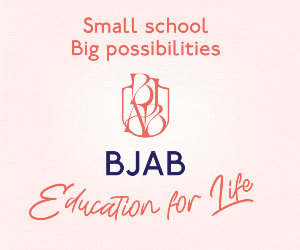As an avid reader of high-quality magazines (evidently) you probably have an appreciation of style, layout and, most important of all, colour. The way colour is displayed and how it reaches the page in such impeccable condition may not have occurred to you, unless of course you have ever tried to design something like a flyer or a newsletter on your home computer and print it onto paper. What goes on? Why does your bright red look like a muddy brown? Put simply, the colours you see on your screen are represented by what is essentially a series of brightly coloured flashing lights and on their journey to the page, they can lose a little definition in translation. If only there were some kind of authority, one that could provide a definitive reference for designers so that the bold colours and subtle hues they envisaged in their head and on their latest itoy would be reproduced faithfully on the printed page.
All print professionals will undoubtedly know that there is indeed such a system – Pantone. Pantone began life as a humble printing company in 1950s America. Their renaissance came following the hiring of a chemistry graduate, Lawrence Herbert in 1956. Herbert called upon his knowledge of chemistry to index the company’s ink and pigment stocks in order to simplify their colour matching. So successful was he that within six years, his was the only department running at a profit, the manufacturing side languishing in debts of some $50,000. Herbert took the opportunity to purchase the technological assets from his employer and re-branded the colour range and associated indexing system as Pantone.
The top-selling point of the system was that it allowed the print industry to design colour layouts to an exact and consistent standard. An advertising hoarding or poster in California would look exactly the same if seen in Florida. “So what?” I hear you cry. Well, in the 50s and 60s, advertising and print were in an absolute boom time. The need for consistency was clear and Pantone was the system that made it possible. The brand began to expand to include reference systems for metallic and pearlescent colours and rapidly became the industry standard.
While printing reaped the benefits in the post-war years, Pantone’s next big bang was in the online graphic design industries. When different computer monitors and different paper stocks reproduced colours of different hues due to screen resolution or the absorbency or weight of the paper, the Pantone colour remained consistent, allowing any adjustments to be made in a regulated and controlled fashion.
The success of the Pantone system and the importance to a variety of industries has bled out into the worlds of art, fashion and beyond. Household names in the world of design and fashion contribute to the Pantone Fashion and Color report (www.pantone.com/spring2013). Tracy Reese, Peter Som and Tommy Hilfiger are among the panel of fashionistas all putting forward their colour visions for the upcoming season and using the Pantone colour scheme as their springboard. If you want to get in on the act, you can check out the Pantone universe on their site and discover art, posters and other collectibles. The theme is set every year by the Pantone Color of the year, which this year happens to be emerald green (Pantone 17-5641). If you’re so minded, consider the Color of the year wallpaper, or kick it old school with previous colour laureates on http://www.pantone.com/pages/index.aspx?pg=21055 Beware, however, if you want to do it on the cheap. Old Pantone matching books and swatches – some as many as a decade old – still go for a healthy $50-100 on popular auction sites.
Right here in Brussels we have a living, working homage to the ubiquity of this colour system – the Pantone Hotel. as you may have guessed, the theme is bold, solid colours and high-end design. It’s inexpensive but funky and fun and is highly rated by guests. I would suggest that if you’re a fan of traditional mahogany and maroon, or soft pastel shades, you may wish to look elsewhere. So, if your bank account isn’t in the (19-1664), why not colour your life a little? It’ll make your friends (16-6138) with envy.







